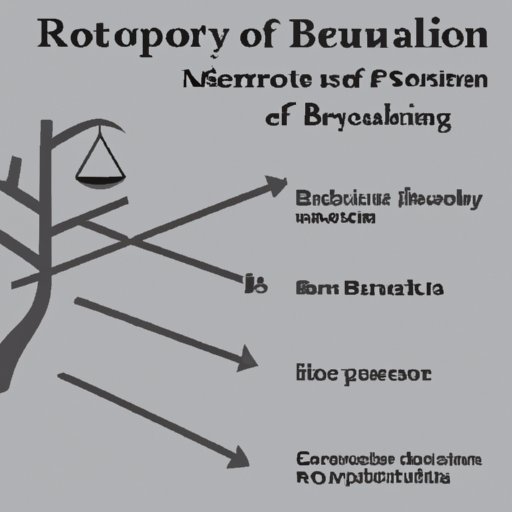Introduction
Criminal behavior is a complex issue that has long puzzled criminal justice experts, researchers, and society at large. Understanding the reasons why people commit crimes is crucial for preventing and reducing crime rates, improving the justice system and creating safer communities. In this article, we explore the root causes of criminal behavior and examine the various factors that contribute to it.
Exploring the Root Causes of Criminal Behavior: A Comprehensive Analysis
Criminal behavior is often influenced by a combination of individual, social, and environmental factors. Individual factors, such as age, gender, ethnicity, mental health, and addiction, can predispose individuals to criminal behavior. Environmental factors like poverty, lack of education, and employment opportunities, and poor living conditions can also increase the risk of offending. Social factors, such as family dynamics, peer pressure, and cultural norms can also play a role in shaping criminal behavior. A comprehensive understanding of the interaction of these factors is crucial for developing effective interventions to reduce offending.
Real-life case studies reinforce this idea. Take, for instance, a teenager from a low-income household who drops out of school and becomes involved in a gang, and ends up committing violent crimes. Here, poverty and lack of education served as triggers, while gang culture and peer pressure acted as a catalyst.
The Psychology of Crime: Understanding the Motivations Behind Offending
Psychological theories provide insight into the motivations behind criminal behavior. The psychodynamic perspective suggests that unresolved childhood conflicts can lead to criminal behavior in later life. In contrast, cognitive-behavioral theory asserts that maladaptive beliefs and thought patterns contribute to offending. Mental illness and personality disorders, such as antisocial personality disorder (ASPD) and narcissistic personality disorder (NPD), are also linked to criminal behavior. For example, individuals with ASPD may exhibit a lack of empathy and remorse and have a disregard for social norms and laws, which can predispose them to offending.
Offenders are typically motivated by a range of emotional states such as anger, greed, and sexual desire. For instance, a theft may stem from economic hardship or a desire for material gains while a violent crime like rape may involve sexual motivations.
Socioeconomic Factors and Criminality: The Correlation Between Poverty and Crime
Poverty is often linked to higher crime rates, but the relationship between the two is complex. It is not just poverty itself but the social and economic inequalities that often come with it that increase the risk of offending. For example, limited access to education, healthcare, or economic resources can make it difficult for individuals to escape the poverty trap, leading them to engage in criminal activities.
Studies reveal that children from poor backgrounds are more likely to suffer from abuse and neglect, witness domestic violence, and experience other forms of trauma. Exposure to these adverse events can result in emotional, behavioral, and cognitive difficulties in adulthood increasing the risk of criminal behavior.
Nature vs. Nurture: Biological and Environmental Influences on Criminal Behavior
Debate abounds regarding the influence of inherent biological factors versus environmental factors in criminal behavior. Some theories suggest that genetics play a role, with studies showing that children of convicts are more likely to engage in criminal behavior than children from non-criminal parents. Others propose that neurological factors, such as brain abnormalities, can also influence criminal behavior. Environmental factors like childhood experiences, socialization, and culture are equally pivotal in shaping criminal behavior. For instance, individuals who grow up in households where violence is normalized or in communities where criminal behavior is glorified are more likely to engage in offending.
Preventing Crime Before it Happens: Proactive Approaches to Reducing Offending
Effective interventions to reduce criminal behavior focus on addressing the root causes of offending. Early intervention, education, and community-based programs have shown to be effective in preventing crime. As such, policymakers must focus on improving educational opportunities, building strong community relations, and providing social and economic support to those in vulnerable positions. Evidence-based interventions like restorative justice and crime-prevention programs, such as Roca program, show a lot of promise in reducing recidivism rates and promoting positive social outcomes.
Conclusion
Criminal behavior is not only a legal problem, but it is also a social, economic, and health issue. Understanding why people commit crimes requires a robust, interdisciplinary approach that considers various factors at play. Combating crime requires proactive, community-based interventions that focus on providing the necessary support, resources, and opportunities for individuals to make positive choices. By addressing the root causes of crime, we can create a safer and more just society.
